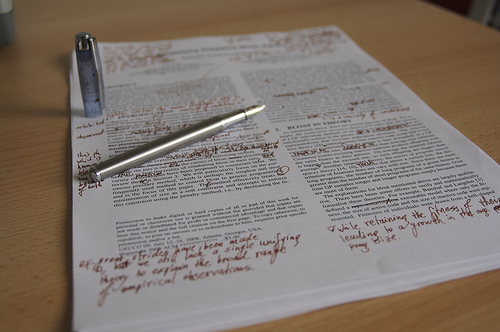In conducting research, you can normally find both primary and secondary sources that can be used. It is important for students to recognise the difference between a primary and a secondary source and know how to use them appropriately.
Download a summary of this post to keep for reference using the social buttons below
A primary source, as the name implies, is a primary or original document or physical object that was written or created:
- at the time the situation under study happens; or
- by a person who experienced or witnessed the situation directly or has direct knowledge of it.
Examples of primary sources include:
- Personal documents: diaries, novels, speeches, letters, personal narratives, interviews, firsthand stories, emails
- Documents from research studies: theses, experiment results, reports, data or findings
- Original documents: original manuscripts, government documents, maps, photographs, newspapers
- Artificial works: paintings, films, music.
Primary sources are commonly used when studying history as they are raw and original and they are from the points of view of people who have direct experience of the past. However, as they are the direct and firsthand sources, sometimes written by a particular person, it is possible that primary sources contain the biases, prejudices, concerns, worries or personal opinions of the authors, and this information will need to be analysed carefully before being referred to in your essay or thesis.
A secondary source, in contrast to a primary source, is a sources that generalises, analyses, interprets, synthesises, evaluates, cites, comments on or discusses the original sources or situation under study. Examples of secondary sources include:
- Publications: books, textbooks, magazines, encyclopaedias, records • History-based documents: historical movies, historical textbooks
- Reviews: book reviews, peer-reviewed articles Through the analysis of many primary sources and the generalisations of the writers, secondary sources can help readers understand the topic more clearly. However, secondary sources are not created by people who have direct experience of the situation under study. Therefore, there can be inaccuracies and some information might be too general or to narrow. It is also important to remember that bias and personal opinion is often present in secondary sources as well. Not all researchers are objective. Students need to be careful when using secondary sources and always confirm the information by checking multiple reliable sources. It is important to remember that whether or not a source is primary or secondary depends on who created it and when it was created, not the form of the source. For example, a magazine article can be a primary source if it is written by a person who has direct knowledge of the situation under study. It can also be a secondary source if it is an analysis of what someone else has found. The best way to research is to use both primary and secondary sources together. This will help you to gain a clearer and more in-depth understanding of what you are studying.
Featured image by Nic’s events


